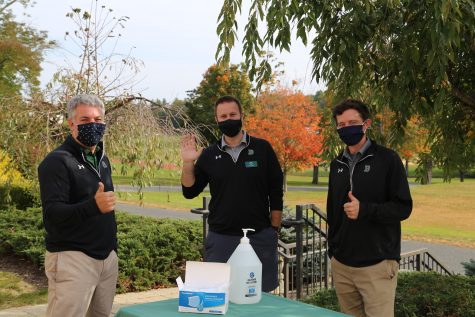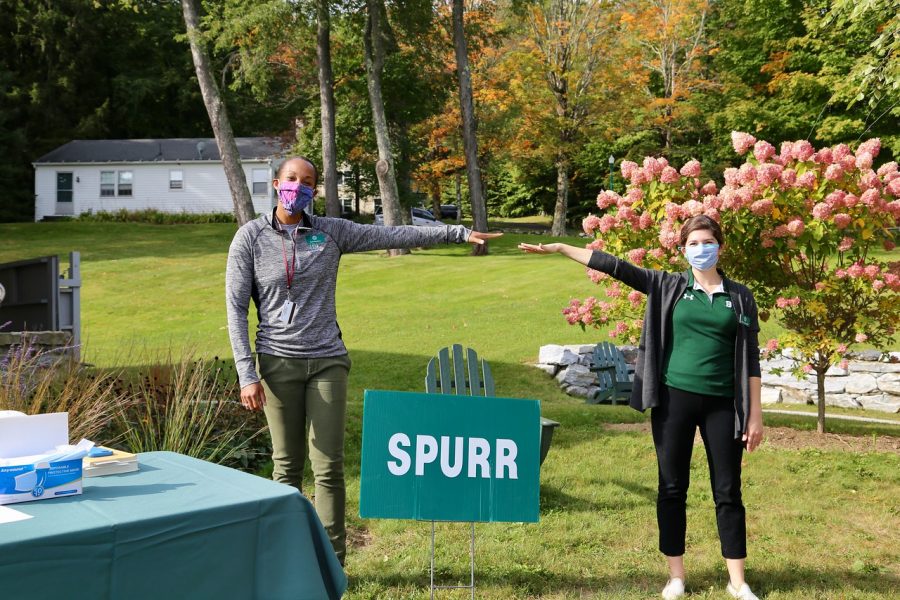Teaching During a Pandemic
March 1, 2021
This year, teachers have been faced with a huge challenge: how do they teach both virtual and in-person students in a completely new environment?
Dan Cooper, who teaches advanced and AP physics, described how difficult it was to navigate the hybrid classroom. “It’s like teaching two different classes at once. How do we create an engaging learning experience for both kids in your classroom and those up at 11:30 trying to take the class. It’s two inherently different learning methods.”
Callie Carew-Miller, who teaches English, agreed that the hybrid approach was the most difficult part of learning during a pandemic. She explained that she wants to be fair to students who are all learning in such different ways. She said that she “really wants everyone to have equal access to materials, equal opportunities to share in class, equal chances to clarify ideas that they don’t understand, but it’s just not happening.”
To try to make learning as fair as possible, teachings are constantly working behind the scenes, whether that is meeting with students outside of class times, talking to other teachers about how to navigate Zoom, professional development, and more. They have had to completely redesign their classrooms and teaching methods, and teachers are putting in a ton of time and energy to make this year as successful as possible.
“Just like students are all in different places with their learning, teachers are too. We all have different strengths, and are t rying to learn from each other,” Mr. Cooper added. “And the pandemic amplified the fact that everyone is coming into class in a different space, and made us realize that now more than ever we need to meet students where they are.”
rying to learn from each other,” Mr. Cooper added. “And the pandemic amplified the fact that everyone is coming into class in a different space, and made us realize that now more than ever we need to meet students where they are.”
There are also lessons that teachers have learned that they will carry into their teaching in the future. Ms. Carew-Miller mentioned that she won’t go back to grading class participation in the same way. She has also taken from this experience a “greater appreciation for being able to enjoy those informal moments in class: being able to see people’s body language, hearing their little jokes, talking to people on their way in and out of the classroom.”
Mr. Cooper has also felt a big difference without being able to see his students’ faces. “You get a lot of nonverbal feedback from your students, probably more than we realized before.” He has also become more open to different forms of evidence of learning; this year, he tried to put less emphasis on formal assessments and more on lab work, presentations, and projects.
While both teachers are grateful for the technology and effort from the Berkshire community that has made this learning possible, they are excited for everyone to be back in person again in the future. “I miss being able to be sponta
neous, and change things as you go based on how the class is doing. That is much more difficult to do in a hybrid classroom,” Ms. Carew-Miller told me.
Every Berkshire teacher has been putting in so much effort to pull off this year despite the COVID-19 pandemic, and we are so grateful for everything they have done!

